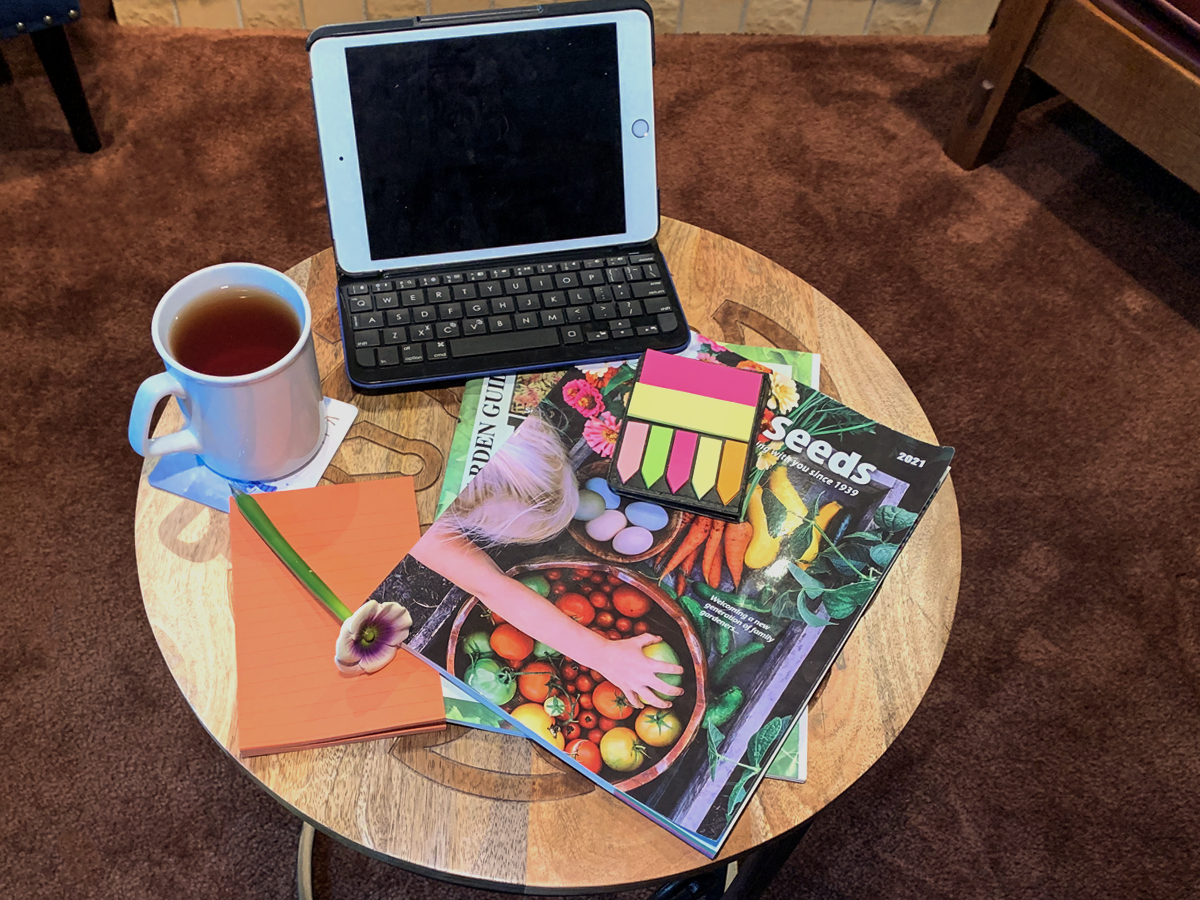Your garden wish book

Photo by Deborah Maier
Do you remember the Sears Wish Book? The arrival of the current issues of garden seed and plant catalogues is just as exciting! There’s the breathless anticipation of what new and wonderful things are contained inside—eager to crack the catalogue open but wanting the moment to just be right—to give it the attention it deserves.
Then there’s the initial flip through the pages, with the oohs and aahs for the photos of the spectacular new varieties of plants. And just as there was for the Wish Book, there’s the compilation of items to be added to the wish list. Then, just like the childhood toy list, the list is ranked and wishes reordered to put the most desired at the top.
Online catalogues are nice, but there is something about the printed version that makes it extra special. Curling up in a comfortable armchair to flip through the pages is so pleasurable.
After the first look, out come the sticky flags. They make it easy to tag a page and the item of interest. In the past, I would remove the flags from the items that don’t make the cut. This year, I’m going to put the full list on my computer and make it part of my garden plan.
Using a spreadsheet or table, each plant can be added with its desired planting location. Instead of just focusing on the “want” for ranking, purpose can be included. I can use the information to develop specific areas of the garden, and if I run out of budget before plants, I have an organized list for next year.
Looking and planning with catalogues in-hand doesn’t eliminate shopping locally. The catalogues are great for inspiration and building plant wish lists. Keep in mind that shipped plants are often bare root. Bare root means that you will receive a clean root of the plant in a bag with a bit of moisture holding wood chips, peat moss, moss, or other packaging.
Typically, the stem is cut down to a few centimeters. Mail ordered trees and shrubs are usually much smaller than what can be purchased at a local garden centre as they need to fit the postal size constraints and not be damaged during shipping. So, if you want instant impact in the yard, acquiring the plant from the garden centre is the way to go.
Putting what you want in a plan, and on paper to take with you when shopping at a garden centre, helps prevent being lured to purchase “eye candy” plants that won’t meet your needs.
Some plants, though, should be ordered. Many of the companies that send catalogues also develop plants. Their new releases, which will be boldly tagged, won’t be available anywhere else, so if it’s the plant you want, then ordering from the supplier is the only way to acquire it.
While the growing interest in starting plants from seeds has resulted in making a wider assortment of seeds available at garden centres, finding something unusual is more likely in a catalogue. There are also more options for the quantity that you can purchase.
Instead of getting a few seeds in an envelope, catalogues often have purchase options by count or weight—which are usually more economical if you want to purchase a lot of a specific seed. Many seeds have a long shelf-life if they are kept cool and dry.
January is a great time to start on a garden plan. Check what seeds you have, peruse the garden catalogues for inspiration, and make a list. Include what plant for where, and when and where to purchase, as well as when to plant. It’s not too late to request a “wish book” catalogue. We may be in the heart of winter, but spring is just around the corner.
To learn more about the Calgary Horticultural Society and gardening in Calgary, visit calhort.org.
